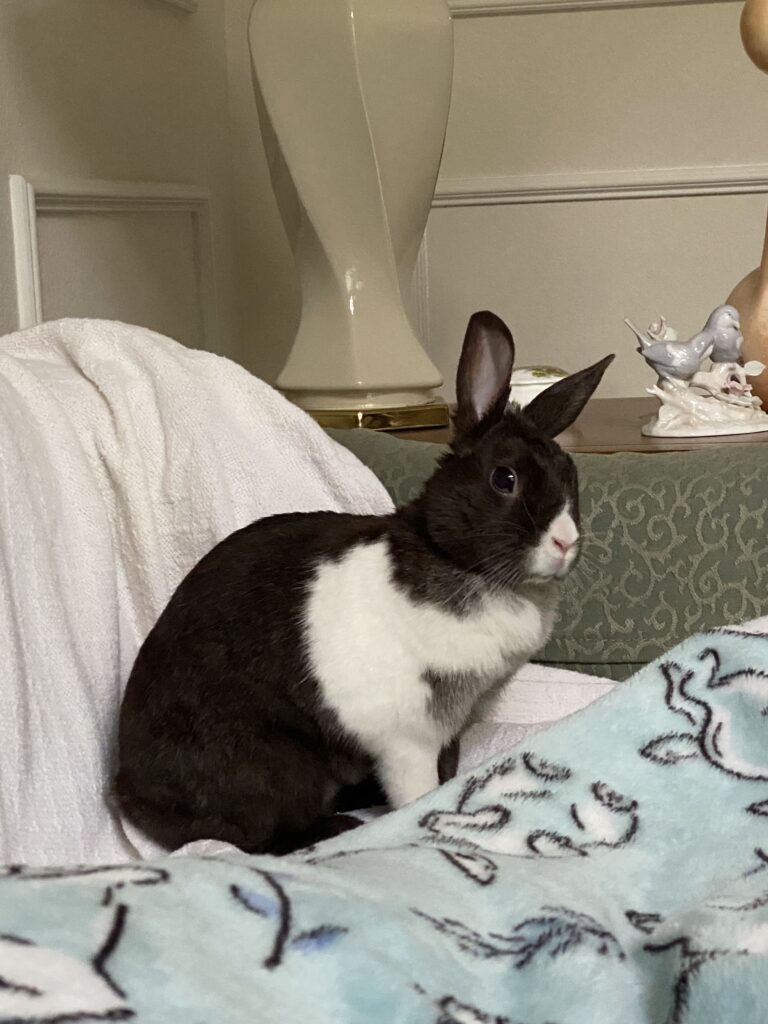
The rabbit is the most popular small animal to keep as a pet and they are known to be very adaptable pets, with individuals settling well either in an outdoor huts or as house-rabbits in the home.
Smaller breeds:
- The Dutch
- The English
- The Netherland Dwarf
- Dwarf Lop
- The Rex
Larger breeds:
- Flemish Giant
- New Zealand Varieties
- Belgian Hare
- Beveran
Feeding/Diet:
Rabbits are herbivores, meaning they eat plants. They’re built for a diet consisting mainly of large amounts of grass and leaves, as well as some flowers and fruits. GRASS HAY is the most important part of a rabbit’s diet. Examples of grass hay include timothy hay, meadow, oat, rye, barley and Bermuda grasses. Rabbits should have grass hay available to them at all times. It’s rich in vitamins, minerals and proteins and encourages healthy GI motility and the appropriate wearing down of teeth through chewing, and also decreases inappropriate chewing of other objects. Furthermore, grass hay helps create a full feeling in the rabbit’s stomach to prevent overeating and obesity. It’s proper for all ages. It’s suggested to feed a variety of two or more different types of grass hay. It is also better to feed sun dried hay over commercially dried hay because it retains more of its nutrients.

Rabbit Food:
- Rabbit mix
- Bran mash
- Seed sticks
- Carrots
- Cabbage
- Rabbits biscuits
- Apples
Housing:
A rabbit’s CAGE should allow them to stand on their hind legs without hitting their heads on the top of the cage, have space for a litter box and a resting area, be easy to clean, and be made of metal or other indestructible material. Cages should be kept in a cool and well-ventilated area. It’s not recommended to place your rabbit’s cage in the basement because it is usually too damp and could cause respiratory disease. If the area is too hot, the rabbit can potentially suffer from fatal heat stroke.
Grooming:
Grooming your rabbit includes fur brushing, fur trimming as need be, mat removal, and removal of debris caught up in the rabbit’s fur. Grooming also includes cleaning the eye areas, ears, the bottom side of your rabbit and nail trims. Care of the rabbit’s fur and skin calls for your observation to check for the presence of parasites and your quick action to provide needed treatment. This article will highlight all the essential rabbit grooming basics and will help you understand how to properly groom your bunny. A well groomed bunny is a happier, healthier bunny.